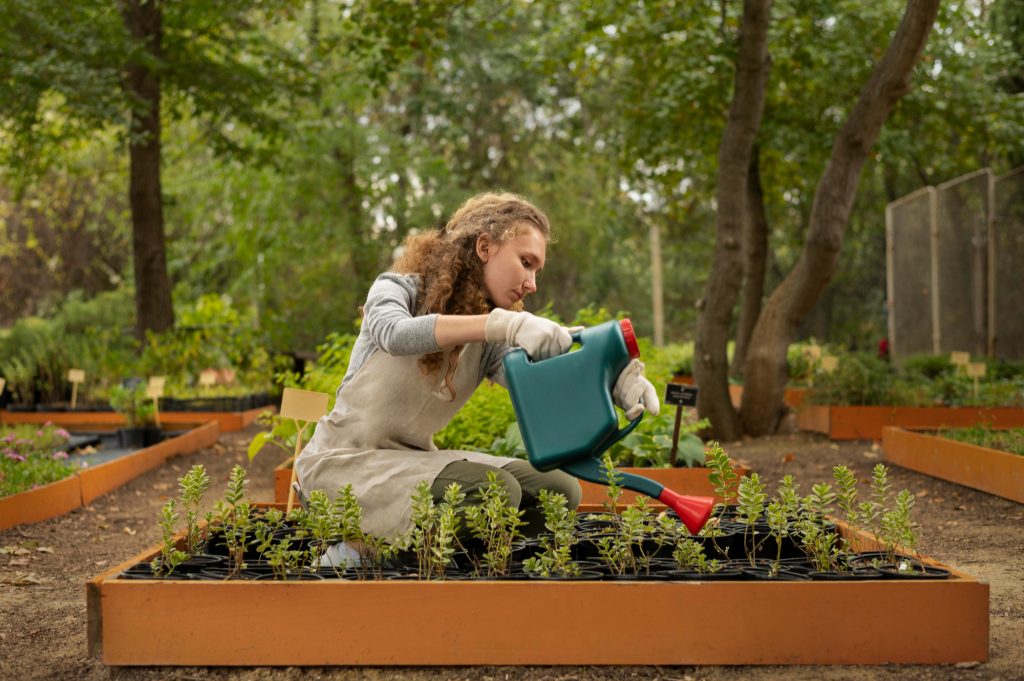Starting a garden from scratch can feel intimidating, but raised beds make it easier than ever to grow healthy plants. An easy raised garden bed is ideal for beginners who want control over their soil, fewer weeds, and a more organized space.
Why Choose a Raised Bed
Raised beds are essentially garden boxes filled with soil above ground level. They come in a range of sizes and materials, from simple wooden frames to sleek metal kits. The most significant advantage is flexibility; you can place them almost anywhere, from a sunny backyard to a small patio.
Because you fill a raised bed with your own soil mix, you can ensure optimal growing conditions. This is especially useful if your native soil is rocky, sandy, or full of clay. Better soil means healthier roots, more vigorous plants, and higher yields.
Raised beds also make gardening more comfortable. The elevated design reduces bending and kneeling, which is great for gardeners of all ages. It also helps with drainage, so your plants never sit in waterlogged soil after heavy rain.
Choosing an Easy Raised Garden Bed
When selecting an easy raised garden bed, consider your space, skill level, and goals. For small gardens, a bed about 3 feet wide allows easy access from all sides. Deeper beds, around 12 to 18 inches, accommodate root vegetables like carrots and beets, while shallower ones are ideal for lettuce and herbs.
Metal raised beds are durable and long-lasting, while wooden ones have a classic look that blends well with natural surroundings. Some modern kits even snap together without the need for tools, making them ideal for beginners.
If you’re short on space, consider modular raised beds that can expand as your garden grows. Select a location that receives at least six hours of sunlight daily, and ensure the area drains well to prevent standing water.
Preparing the Perfect Soil Mix
The secret to a thriving raised bed lies in the quality of the soil. For best results, fill your easy raised garden bed with a mix of compost, topsoil, and aerating materials like coconut coir or perlite. This combination creates a nutrient-rich, well-draining base that supports vigorous root growth.
You can also enrich the soil with organic fertilizers or compost before planting. Avoid using regular garden soil alone, as it tends to compact over time, reducing airflow and water movement.
After filling the bed, water it thoroughly to help the soil settle before planting. Adding mulch on top will retain moisture, regulate temperature, and suppress weeds.
Best Plants for Garden Beds
One of the most exciting steps in setting up your raised bed is choosing what to grow. Beginners often find success with low-maintenance plants for garden beds, such as:
- Lettuce and spinach: Quick-growing greens that can be harvested multiple times.
- Tomatoes: These thrive in raised beds where the soil warms up faster.
- Herbs: Basil, parsley, and chives are compact and easy to manage.
- Root vegetables: Carrots, radishes, and beets love loose, deep soil.
- Marigolds: Great companion flowers that help deter pests naturally.
Planting and Maintenance Tips
Once your raised bed is ready, plant taller crops, such as tomatoes or peppers, toward the back, and smaller ones, like lettuce or herbs, in front. This ensures even sunlight. Group plants with similar water and sunlight requirements to simplify maintenance.
Water consistently, especially during the first few weeks while the roots are establishing. Using a drip irrigation system or a retractable garden hose helps deliver water efficiently without disturbing the soil.
Check soil moisture regularly. Raised beds dry out faster than ground-level gardens, so deep watering once or twice a week is better than light daily watering. Fertilize occasionally with organic compost or a balanced liquid fertilizer to replenish nutrients.
Long-Term Benefits of Raised Bed Gardening
An easy raised garden bed not only simplifies the gardening process but also improves soil health over time. Because you can amend the soil each season, it stays fertile and productive for years. Raised beds also reduce competition from weeds and make it easier to control pests.
Setting up your first raised bed is one of the most rewarding ways to start gardening. With the right bed, healthy soil, and beginner-friendly plants, you can create a thriving space full of life and color. An easy raised garden bed simplifies every step, while thoughtful choices of plants for garden beds ensure lasting success. Once you see your first sprouts appear, you’ll understand why so many gardeners never look back.









